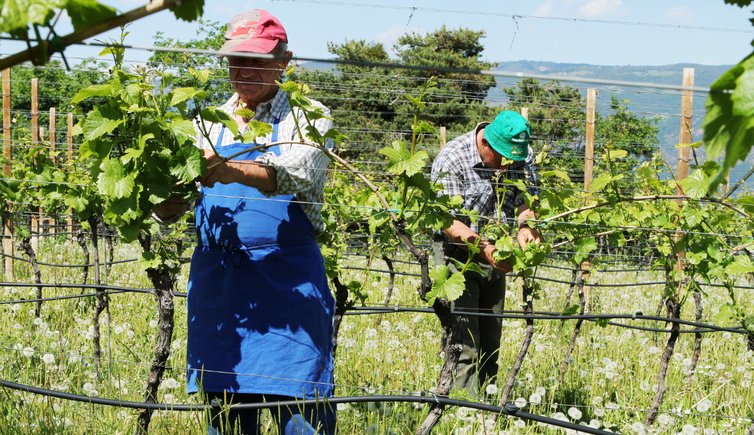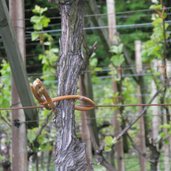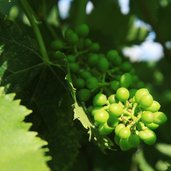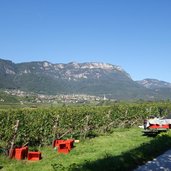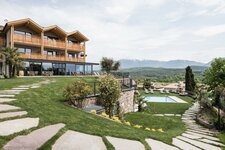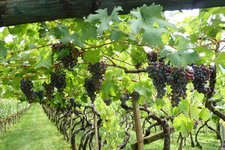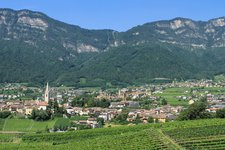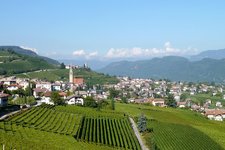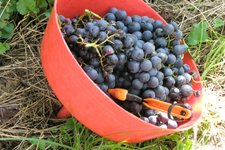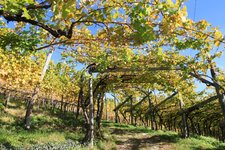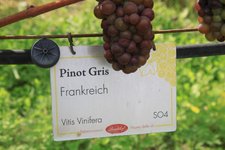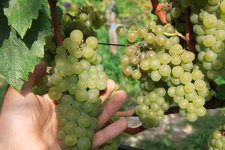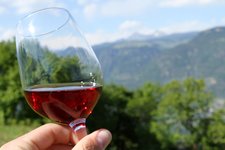The work of the winegrowers lasts all year round, from the so-called “tieing” in March to the grape harvest in autumn
Image gallery: Wine year
-
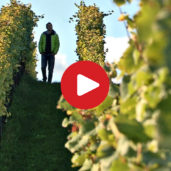
Video : Grape harvest in South Tyrol
-
D_RS172680_0900_Weinrebe_Binden_Tradition_Kaltern_RD.JPG
-
D_RS185525_7059-Moscato-giallo-Session-two.JPG
-
1554208046D_RS209381_7510-weinlandschaft-bei-kaltern-weinlese-wimmen.JPG
-
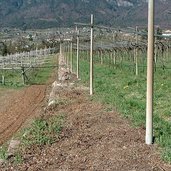
-
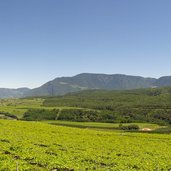
-

video : Toerggelen in South Tyrol - part 2
-

video : Toerggelen in South Tyrol - part 1
-

video : Pure: Toerggelen
-

video : Wine-Walk Week in Termeno
-

video : Frosty nights
In order to bottle a good wine in the end, a lot of work has to be done in the vineyards and in the cellars throughout the whole year. An overview of the annual rhythm of a winegrower:
* January (average temperature of 0 degrees C):
The first new wine of the previous year is bottled.
* February (average temperature of 4 degrees C):
The vines are cut. Three years after planting the vines the first grape harvest can take place.
* March (average temperature of 9 degrees C):
The winegrower uprights the vine arbours, which means he controls the wooden stakes and wires and changes defect parts. Afterwards the vines are tied up, a work called “Binden” in German.
* April (average temperature of 12 degrees C):
Due to the warm sunbeams, the vines are “weeping”, in fact the water is absorbed by the roots and led to the end of the shoots.
* May (average temperature of 16 degrees C):
The young shoots appear.
* June (average temperature of 20 degrees C):
The vines blossom and have to be deleaved. Most of the high quality wines of the previous year have reached their full ripeness and are bottled.
* July (average temperature of 23 degrees C):
In order to have a good harvest, the usual 1,900 sunshine hours are needed during the year, here, in the beautiful area of Caldaro and Termeno.
* August (average temperature of 22 degrees C):
The grapes reach the size of a hazelnut, the red grape varieties change colour.
* September (average temperature of 18 degrees C):
The time of the grape harvest, called “Wimmen” in German, is coming and the wine barrels are carefully cleaned and sealed. The harvest of the first white grape varieties starts in the lower altitudes at the beginning of September.
* October (average temperature of 13 degrees C):
The fully matured red grapes are picked in two or three stages in order to produce high quality wines. Then the grapes get rid of the stalks by the destemming machine and the mash is filled into various barrels to ferment. The white grapes, however, are pressed together with the stalks and only the grape juice is pumped into the fermenting barrels (not the crushed grapes of the mash). During the fermentation sugar is converted into alcohol.
* November (average temperature of 6 degrees C):
After the fermentation, which takes 6 to 10 days, the new red wine is separated from the marc and pumped into the storage barrels. The marc is pressed and the famous clear schnapps called “Grappa” or “Treber” is made of them.
* December (average temperature of 2 degrees C):
Until mid-December the wine is fermenting in the barrels. When the ground starts to freeze, the vines can rest until the start of the vegetation cycle in March.
